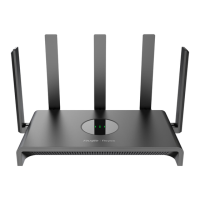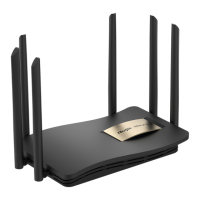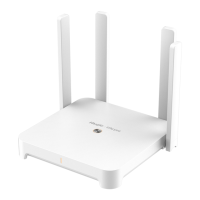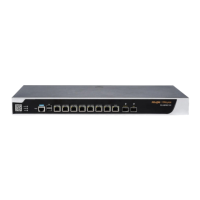Web-based Configuration Guide 1 Network Settings
51
When Internet is set to DHCP, the automatically obtained gateway address is
displayed.
When Internet is set to Static IP, you need to configure this parameter manually.
When Internet is set to DHCP, the automatically obtained DNS server address is
displayed.
When Internet is set to Static IP, you need to configure this parameter manually.
If the current device cannot access the Internet through DHCP or cannot obtain
the IPv6 prefix, you need to enable the NAT66 function to allocate IPv6 addresses
to clients on the internal network.
Set the default route preference for the current line. A smaller value indicates a
higher preference. For the same destination address, the route with the highest
preference is selected as the optimal route.
Caution
The RG-EG105G and RG-EG105G-P does not support the NAT66 function.
3.7.6 Configuring an IPv6 Address for the LAN Port
Choose Local Device > Basics > IPv6 Address > LAN Settings.
When the device accesses the Internet through DHCP, it can obtain LAN port IPv6 addresses from the uplink
device and allocate IPv6 addresses to the clients in the LAN based on the IPv6 address prefix. If the uplink device
cannot allocate an IPv6 address prefix to the device, you need to manually configure an IPv6 address prefix for
the LAN port and enable the NAT66 function to allocate IPv6 addresses to the clients in the LAN. For details, see
Section 3.6.5 Configuring an IPv6 Address for the WAN Port.
Click Edit next to the default VLAN, and set IPv6 Address/Prefix Length to a local address with no more than
64 bits. This address is also used as the IPv6 address prefix.
You can use either of the following methods to allocate IPv6 addresses to clients:
Auto: Allocate IPv6 addresses to clients in DHCPv6 or SLAAC mode.

